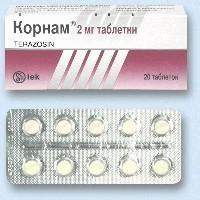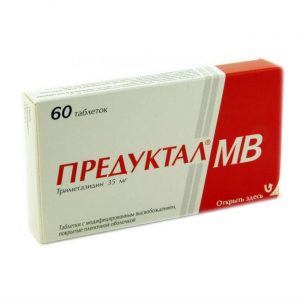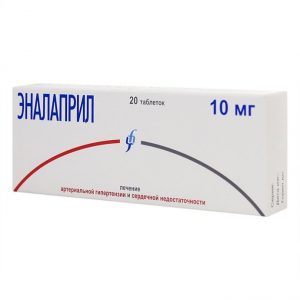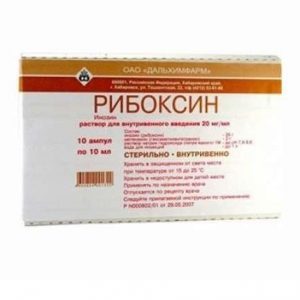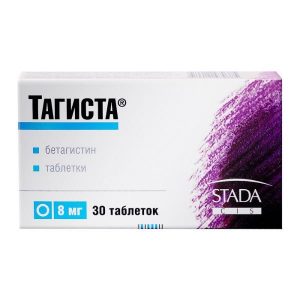Description
Packing
20 pcs.
Pharmacological action
Kornam – a blocker of peripheral postsynaptic A1-adrenergic receptors.
By blocking the A1-adrenergic receptors of the smooth muscles of the prostate gland and bladder neck, the drug helps to normalize urination in patients with benign prostatic hyperplasia.
Causes the expansion of arterioles and venules, reduces OPSS and venous return to the heart, resulting in decreased blood pressure. The onset of hypotensive effect 15 minutes after ingestion (single dose). The duration of the hypotensive effect is 24 hours. The maximum effect when taking a single dose is achieved within 2-3 hours. The maximum hypotensive effect is achieved after 6-8 weeks of therapy. With prolonged use, a decrease in blood pressure is not accompanied, as a rule, by the development of reflex tachycardia.
The drug helps to normalize lipid metabolism: it lowers cholesterol, TG, LDL and VLDL in the blood, while increasing the amount of HDL.
With the systematic use of Kornama, regression of left ventricular hypertrophy is noted.
Indications
– Benign prostatic hyperplasia (symptomatic treatment).
– Arterial hypertension.
Contraindications
– Children.
– Hypersensitivity to the drug.
With caution, the drug should be prescribed for angina pectoris, coronary heart disease, liver or kidney failure, cerebrovascular accident, type 1 diabetes.
Use during pregnancy and lactation
Corn can be used during pregnancy and during breastfeeding if the potential benefit to the mother outweighs the potential risk to the fetus or infant.
Special instructions
To prevent the development of orthostatic arterial hypotension, treatment should be started with the appointment of Cornam at a dose of 1 mg / day. before bedtime, after which the patient should be in bed for 6-8 hours
The risk of orthostatic arterial hypotension (first dose effect) is highest within 30-90 minutes after taking the drug and is increased in patients simultaneously receiving beta-blockers and diuretics, with a decrease in BCC, a hypo-salt diet, as well as with the resumption of drug treatment after a break (several days).
In the event of a temporary cessation of treatment, therapy is resumed with the same dose. During treatment, the level of specific antigen of the prostate gland does not change. Prior to initiating therapy for benign prostatic hyperplasia, it is necessary to exclude prostate cancer.
The patient should be informed about the increased risk of developing orthostatic hypotension with alcohol, prolonged standing or exercise, or in hot weather.
Within 12 hours after taking the first dose, after increasing the dose or interrupting therapy, it is not recommended to engage in potentially dangerous activities that require increased attention and speed of psychomotor reactions.
Composition
1 tablet contains: terazosin (in the form of dihydrate hydrochloride) 2 mg.
Dosage and administration of
In benign prostatic hyperplasia, the initial dose is 1 mg 1 time / day. before bedtime. Gradually, the dose is increased to 2-10 mg / day. to achieve the optimal effect. The therapeutic effect is usually observed 2 weeks after the start of treatment. To achieve a lasting effect, the course of treatment should be 4-6 weeks.
In arterial hypertension, the drug is prescribed in an initial dose of 1 mg / day. before bedtime. Gradually increase the dose until a clinical effect is achieved. The maintenance dose is 1-10 mg 1 time / day. The maximum daily dose is 20 mg. In the case of a temporary discontinuation of the drug, treatment is resumed according to the same scheme.
Side effects
– In the treatment of benign prostatic hyperplasia
From the cardiovascular system: rarely – orthostatic hypotension.
From the side of the central nervous system: drowsiness, dizziness, asthenia.
Other: nasal congestion.
– In the treatment of arterial hypertension
From the cardiovascular system: orthostatic hypotension is the first dose effect (observed in 1% of patients, mainly receiving diuretics or beta-blockers), manifested by dizziness, tachycardia, fainting is rare – a feeling of palpitations, peripheral edema, nasal congestion.
From the side of the central nervous system: rarely – dizziness, asthenia, drowsiness, impaired clarity of visual perception.
From the hemopoietic system: a decrease (associated with hemodilution) of hematocrit, hemoglobin, leukopenia, hypoproteinemia, hypoalbuminemia.
Other: rarely – decreased potency, nausea.
Drug interaction
With the simultaneous use of Kornama and beta-blockers, diuretics, calcium channel blockers, ACE inhibitors, the antihypertensive effect may be enhanced. Particular caution is required with the simultaneous administration of terazosin and centrally acting antihypertensive drugs.
The absorption of terazosin decreases while taking adsorbents and antacids.
Adrenergic agonists weaken the effect of terazosin.
With the simultaneous use of terazosin and NSAIDs, a decrease in the antihypertensive effect is possible due to the suppression of prostaglandin synthesis and the retention of fluid and sodium ions.
Overdose
Symptoms: severe BP, impaired movement coordination, fainting.
Treatment: It is necessary to lay down the patient by lowering the head end of the bed. If necessary, appoint hypertensive agents, in / in the introduction of fluid. Hemodialysis is not effective.
Storage conditions
At a temperature not exceeding 25 ° C.
Shelf life
3 years.
Deystvuyushtee substance
terazosin
Terms and conditions
prescription
Dosage form
tablets
Replacement product
KORNAM 0.002 N20 Tablet
Working 2mg Tab. X20
Core 2mg Tab. X20 (R) /! To 01.09g /
Working 2mg Tab. X20 (R) /! To 05.09g /
Working 2mg Tab. X30 /! To 06.13g /
Sandoz, Switzerland
